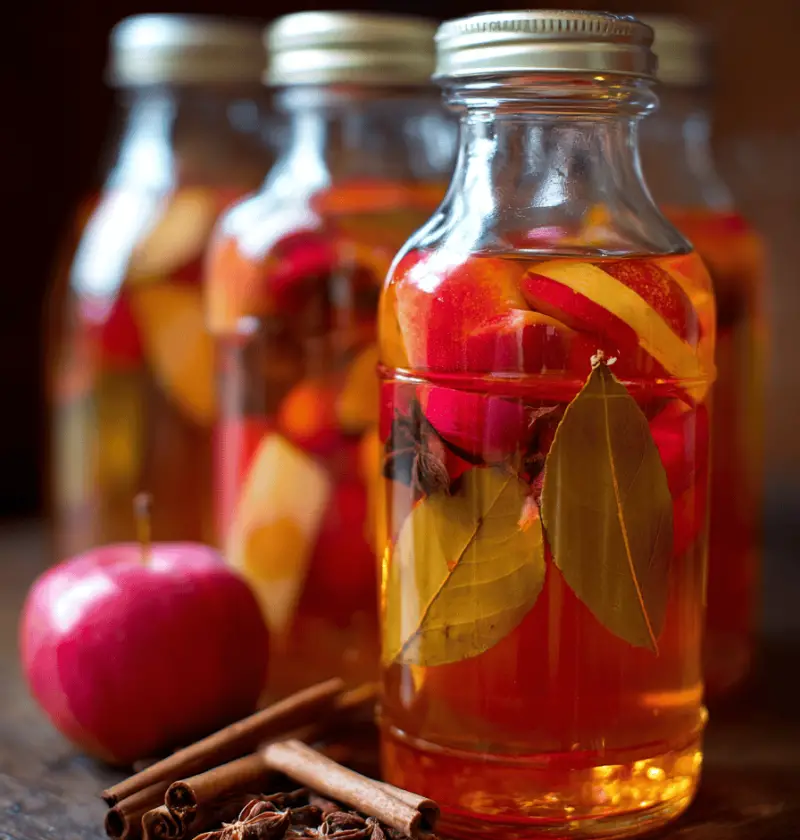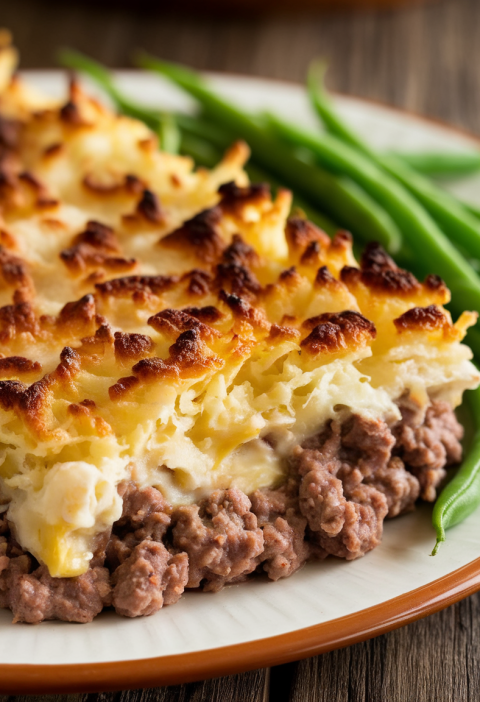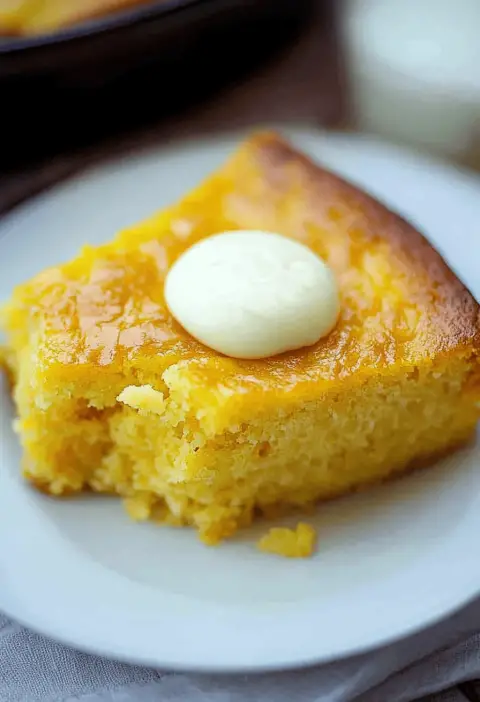Fire Cider Recipe
This Fire Cider Recipe is a spicy, immune-boosting homemade tonic that packs a punch with apple cider vinegar, ginger, garlic, and warming spices.
Let me explain why this fiery tonic has earned a permanent spot on my kitchen counter. Fire cider is an age-old herbal tonic—a zingy blend meant to rally your defenses when sniffles or brain fog creep in. I first fell for it one frosty November morning, stirring a spoonful into hot tea as I watched leaves drift from my backyard maple. Unlike sugary store-bought syrups, this homemade elixir leans on raw Apple Cider Vinegar and fresh ingredients—each bringing vitamins, enzymes, and that unmistakable kick. You can sip it straight, pour a dash into soup, or drizzle over roasted veggies. Honestly, there’s something satisfying about shaking a mason jar, breathing in the spicy aroma, and knowing you’ve crafted a little shield for your immune system. Ready to give your health a friendly nudge?
Why You’ll Love This Recipe (H2)
- Immune-boosting punch in every spoonful—thanks to ginger, garlic, and horseradish
- No cooking required—just chop, pour, seal, and wait
- Customizable heat level—tweak the cayenne or horseradish to suit your taste buds
- Shelf-stable tonic you can stash for months in the fridge
- Beginner-friendly: no special tools, just a mason jar and a knife
- Perfect for gifting—bottle it up and tie with a ribbon
- Versatile: stir into tea, dress salads, or sip neat as a daily shot
- Budget-wise: homemade ingredients cost less than boutique wellness shots
Ingredients (H2)
- 2 cups raw Apple Cider Vinegar (I use Bragg’s with “the mother” for extra enzymes)
- ½ cup peeled, thinly sliced fresh ginger (look for firm, smooth skin; peel with a spoon)
- ½ cup chopped garlic (about 10 large cloves; local farmers’ market heads pack more flavor)
- ½ cup finely chopped yellow onion (or sweet Vidalia, if you like mild bite)
- ¼ cup freshly grated horseradish root (substitute 2 tbsp prepared in jar if fresh is scarce)
- 1 tbsp crushed red pepper flakes (reduce to 1 tsp for gentle heat)
- 1 tsp whole black peppercorns (crack lightly for aroma)
- 1 tsp turmeric powder or 1 tbsp grated fresh turmeric (optional, for color and anti-inflammatory bonus)
- ¼ cup raw honey (local wildflower honey balances the sharp flavors—swap maple syrup for vegan sweetness)
Tip: Choose organic produce when you can, and rinse well. A small food processor speeds chopping, but a sharp knife works just fine.
Directions (H2)
-
Prep your jar and tools
Wash a 16-ounce mason jar and lid in hot, soapy water. Dry completely—any moisture invites unwanted bacteria. -
Layer the aromatics
Add sliced ginger, chopped garlic, chopped onion, and grated horseradish to the jar. Layering helps you sniff out each ingredient as you build flavors. -
Sprinkle in spices
Toss in red pepper flakes, cracked peppercorns, and turmeric (if using). You’ll see bursts of gold, red, and black—looks like kitchen confetti. -
Pour in Apple Cider Vinegar
Gently fill the jar until all solids are submerged. Leave about ½ inch of headspace so nothing spills over when you shake. -
Seal, label, and shake
Close tightly. Jot the date on a piece of masking tape or gift tag—knowing precisely when you started matters. -
Infuse for 2–4 weeks
Store at room temperature, away from direct sunlight. Give it a vigorous shake once or twice daily—this wakes up all those nutrients. -
Strain the mixture
After 14–28 days, place a fine mesh strainer or doubled cheesecloth over a bowl and pour the contents through. Press sediments gently to extract every drop of liquid. -
Sweeten and bottle
Stir in raw honey (or maple syrup) until fully dissolved. Funnel the strained tonic back into a clean jar or dark amber bottle for long-term storage. -
Enjoy and adjust
Taste a small spoonful. If it’s too fiery, add a tad more honey or a splash of water. If you crave extra heat, let it infuse a few more days.
Servings & Timing (H2)
Yield: About 16 ounces (1 pint) of Fire Cider tonic
Prep Time: 15 minutes of chopping and layering
Infusion Time: 2–4 weeks (longer steep means mellower spice)
Straining & Bottling: 10 minutes
Total Time: Minimum 2 weeks, maximum 4 weeks—worth every day of anticipation
Variations (H2)
- Citrus Zing: Add strips of orange or lemon peel for brightness.
- Smoky Twist: Stir in 1 tsp smoked paprika for a campfire vibe.
- Herbal Boost: Toss in rosemary sprigs or fresh thyme during infusion.
- Tropical Fire: Swap honey for mango syrup and add a few pineapple chunks.
- Jalapeño Kick: Include sliced jalapeños for extra green heat.
- Milder Shot: Use half the horseradish and cayenne, then top up vinegar.
Storage & Reheating (H2)
Store your fire cider in the fridge for up to six months—no freezer needed. It stays vibrant and safe, thanks to the vinegar’s preserving acids. There’s no reheating required, but you can warm a spoonful with tea or broth when you want full-body comfort. Make-ahead advice: Start a batch at the first sign of cough season, or keep one ready year-round as a zippy flavor enhancer.
Notes (H2)
• Labeling jars made me feel like a spice shop owner—seriously, it helps track steep times.
• I learned that fresh horseradish beats the jarred kind for that signature sinus-clearing punch.
• If sediments bother you, blitz everything in a blender before straining—yields a smoother pour.
• Taste test at two weeks; I tend to hit the sweet spot around 18 days.
• For extra antioxidant oomph, add a sprinkle of powdered elderberry at bottling.
FAQs (H2)
Q1: What’s the point of Apple Cider Vinegar “with the mother”?
A1: The mother is strands of beneficial enzymes and probiotics that support digestion and immunity.
Q2: Can kids take Fire Cider?
A2: For older children, a half-teaspoon stirred into juice works; check with your pediatrician for young kids.
Q3: Do I have to strain out the solids?
A3: Straining gives you a clear tonic, but some folks leave the bits in for extra fiber—your call.
Q4: Why use raw honey instead of sugar?
A4: Raw honey adds natural sweetness plus enzymes and antioxidants, unlike refined sugar.
Q5: My blend tastes too sharp—how do I tone it down?
A5: Dilute with more vinegar, stir in extra honey, or reduce the cayenne next time.
Q6: Can I speed up infusion with heat?
A6: Warmth boosts extraction, but higher temps may destroy delicate enzymes—patience at room temp is safest.
Q7: Is Fire Cider vegan?
A7: Swap honey for maple syrup or agave and it’s fully plant-based.
Q8: How do I use it daily?
A8: A tablespoon in the morning, added to tea, or drizzled on roasted veggies—whatever fits your routine.
Conclusion (H2)
This homemade Fire Cider Recipe is a lively, immune-supporting tonic you’ll return to again and again—no fancy gear required. From chopping fresh ginger to sipping that first zesty spoonful, each step feels like a little act of self-care. Give it a try, share your favorite variation in the comments, and explore more DIY wellness recipes on the blog.

Fire Cider Recipe
Ingredients
- 2 cups raw Apple Cider Vinegar I use Bragg’s with 'the mother' for extra enzymes
- 1/4 cup fresh ginger peeled and thinly sliced
- 1/4 cup garlic chopped
- 1/4 cup yellow onion finely chopped
- 2 tbsp freshly grated horseradish root substitute 2 tbsp prepared in jar if fresh is scarce
- 1 tbsp crushed red pepper flakes reduce to 1 tsp for gentle heat
- 1 tsp whole black peppercorns crack lightly for aroma
- 1 tsp turmeric powder optional, for color and anti-inflammatory bonus
- 1/4 cup raw honey local wildflower honey balances the sharp flavors—swap maple syrup for vegan sweetness
Instructions
- Wash a 16-ounce mason jar and lid in hot, soapy water. Dry completely—any moisture invites unwanted bacteria.
- Add sliced ginger, chopped garlic, chopped onion, and grated horseradish to the jar. Layering helps you sniff out each ingredient as you build flavors.
- Toss in red pepper flakes, cracked peppercorns, and turmeric (if using). You’ll see bursts of gold, red, and black—looks like kitchen confetti.
- Gently fill the jar until all solids are submerged. Leave about ½ inch of headspace so nothing spills over when you shake.
- Close tightly. Jot the date on a piece of masking tape or gift tag—knowing precisely when you started matters.
- Store at room temperature, away from direct sunlight. Give it a vigorous shake once or twice daily—this wakes up all those nutrients.
- After 14–28 days, place a fine mesh strainer or doubled cheesecloth over a bowl and pour the contents through. Press sediments gently to extract every drop of liquid.
- Stir in raw honey (or maple syrup) until fully dissolved. Funnel the strained tonic back into a clean jar or dark amber bottle for long-term storage.
- Taste a small spoonful. If it’s too fiery, add a tad more honey or a splash of water. If you crave extra heat, let it infuse a few more days.







